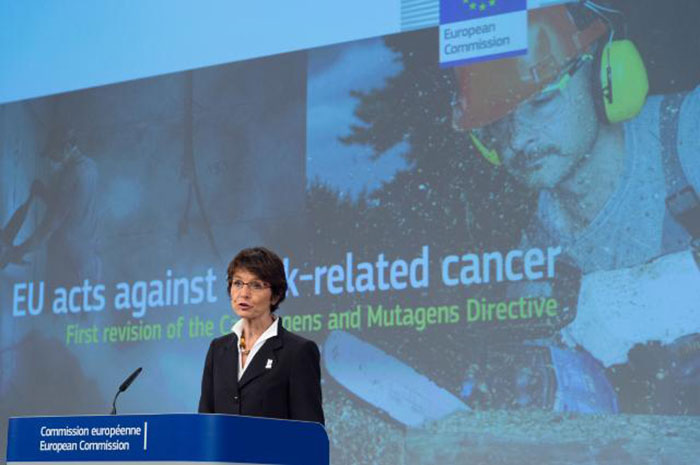Cancer is the first cause of work-related deaths in the EU, accounting for 53% of the total and therefore the single biggest health risk to workers in the European Union.
To improve protection for workers from cancer-causing chemicals, the Commission today proposes changes to the Carcinogens and Mutagens Directive (2004/37/EC) to limit exposure to 13 cancer-causing chemicals at the workplace.
The Commissioner for Employment, Social Affairs, Skills and Labour Mobility, Marianne Thyssen, said: ‘Cancer has an enormous impact on workers, their families, industry and society. With this proposal we will save 100,000 lives in the next 50 years. Protection of workers is at the core of the Commission’s commitment to a strong social Europe.”
Concretely, the Commission proposes to address exposure to 13 cancer-causing chemicals by including new or amended limit values in the Carcinogens and Mutagens Directive. These limit values set a maximum concentration for the presence of a chemical carcinogen in the workplace air. The proposal is based on scientific evidence and follows broad discussions with scientists, employers, workers, Member States’ representatives and labour inspectors.
One specific example of a new chemical agent to be added is ‘respirable crystalline silica’ (RCS), which the Commission proposes to include in the Directive as a ‘process generated’ substance, meaning dust created by work processes such as mining, quarrying, or tunnelling or cutting, crushing or grinding of silica-containing materials such as concrete, bricks, or rocks. While some companies have good control of airborne concentrations of this chemical, supported by a dedicated social partner agreement, it is nevertheless a leading cause of both the lung disease ‘silicosis’ and occupational lung cancer. The Commission proposal will protect workers across the EU, including in the construction sector, which represents almost 70% of all workers exposed to ‘respirable crystalline silica’.
Introducing these limit values will lead to fewer cases of occupational cancer. In addition, EU limit values promote consistency by defining a ‘level playing field’ for all users and a common objective for employers, workers and enforcement authorities. The proposal therefore leads to a more efficient system of workers’ health protection and improved fairness in the single market.



